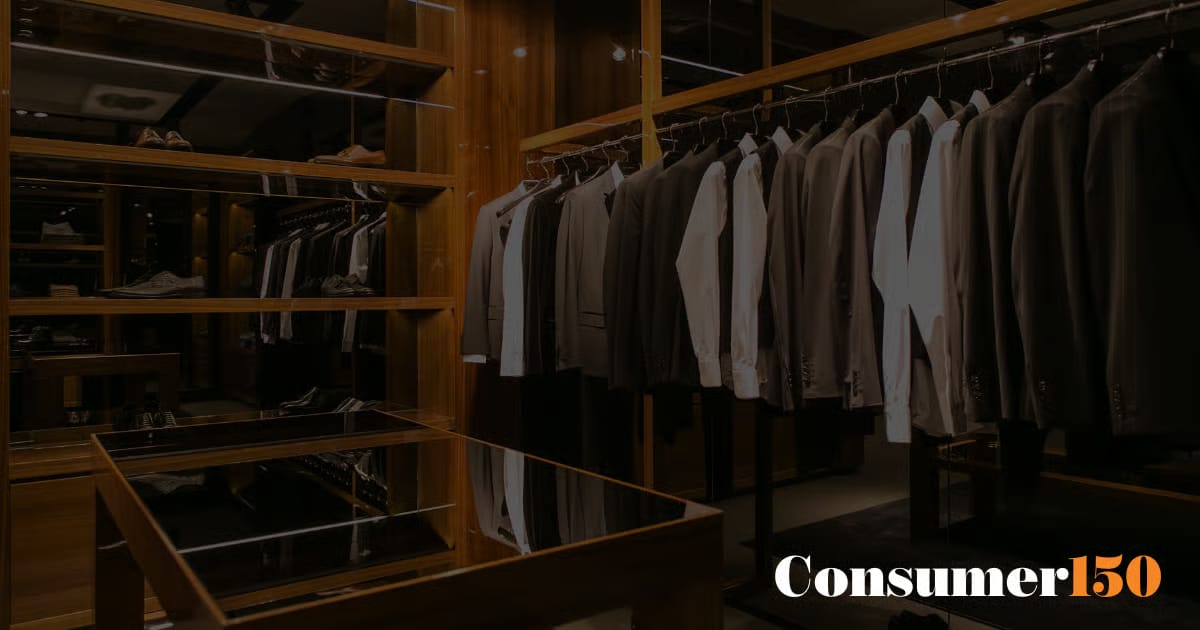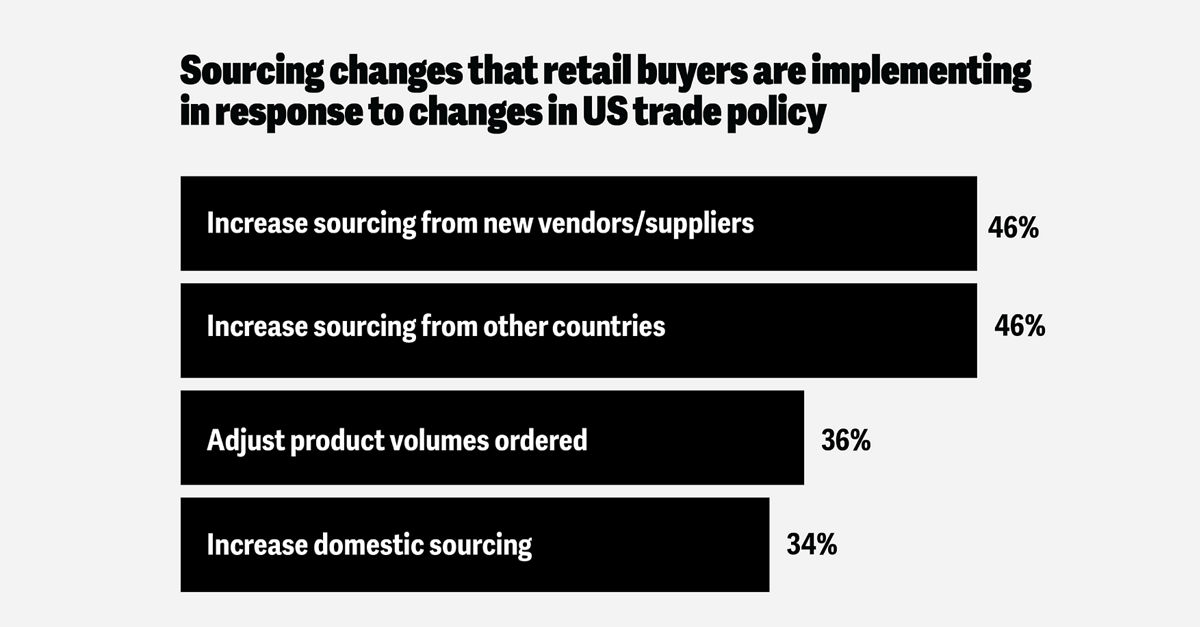- Consumer 150
- Posts
- $50 Cashmere Sweaters I $1.3 Trillion In Play In Consumer Tech I $200M DTC Deal
$50 Cashmere Sweaters I $1.3 Trillion In Play In Consumer Tech I $200M DTC Deal
Consumer tech Players are in a $1.3T field, while social commerce escalates fast to $1 trillion.
Good morning, ! This week we’re examining the cloud’s evolving value proposition for the C-suite, how self-use is redefining gift card strategy, the $1T surge in social commerce and the growing role of Gen AI in consumer discovery.
Join 50+ advertisers who reach our 400,000 executives: Start Here.
Know someone deep in the consumer space? Pass this along—they’ll appreciate the edge. Share link.
— The Consumer150 Team
TREND OF THE WEEK
Cloud’s New Pitch: From Efficiency to Trust

Cloud technology is no longer just about scalability and cost—it’s now being judged by its ability to deliver on risk, security, and control. According to PwC’s survey of 990 respondents, the top perceived benefit is better risk mitigation (42%), followed closely by enhanced stakeholder trust (39%) and regulatory compliance (36%).
What’s changing? The cloud narrative is maturing. It’s not just about digital transformation—it’s about making that transformation secure, compliant, and reputationally sound. But the split in sentiment is telling: while some organizations see these gains, others remain unconvinced—with cyber posture and resilience scoring lower (32% and 31%) among respondents.
This divergence suggests a gap in cloud maturity and execution. For B2B service providers and enterprise tech platforms, that’s either a red flag—or a runway.
Bottom line: In 2025, cloud isn’t just an IT decision. It’s a boardroom issue. Providers that can prove ROI in trust, not just speed, will win the enterprise wallet. (More)
PRESENTED BY TIMEPLAST
Former PepsiCo Exec Invented A Plastic That Dissolves in Water
If anyone knows a thing about plastic’s impact on the planet, it’s Manuel Rendon. The former PepsiCo executive and environmental engineer is using his 20 years of expertise to solve one of the world’s biggest problems with Timeplast.
Up to 450 million metric tons of plastic are wasted each year. Microplastics seep into our bodies, and mountains of bottles pile up in the ocean. But Timeplast has patented a water-soluble, time-programmable plastic that vanishes without harming the environment.
Major players are already partnering with Timeplast for its patented technology—their sales grew 6,000% in the first month.
You have just a few days left to invest as Timeplast scales in its $1.3T plastic market, from packaging to 3D printing. Become a Timeplast shareholder by midnight, 7/31.
This is a paid advertisement for Timeplast’s Regulation CF Offering. Please read the offering circular at invest.timeplast.com.
ECOMMERCE
Social Commerce Is Headed for $1T—And Fast

Social commerce isn’t just growing — it’s on a rocket ride. Global revenue hit $571B in 2023, and is projected to nearly double to $1.085T by 2028, per Statista.
What’s driving it? More buyers (118M expected by 2027) and bigger baskets — sales per buyer are set to double between now and then, says Insider Intelligence.
Facebook leads the charge with 67.8M projected buyers in 2024, followed by Instagram (45.3M) and TikTok (35.8M). But here’s the twist: while Meta is pulling back on in-app shopping, TikTok is all in — and expected to add 15.8M new social buyers by 2026.
Bottom line: If your product isn’t embedded in someone’s scroll, you’re losing to someone who is. (More)
DEAL OF THE WEEK
Luxury for Less… Investors Want In

Quince, the DTC label famous for its $50 cashmere sweaters, just raised $200M at a $4.5B+ valuation — more than double its last round. Iconiq Capital (aka Silicon Valley’s secret money vault) led the deal.
What’s different here? While most DTC startups are choking on CAC and inventory bloat, Quince is flipping the script on the economics of clothing and apparel. By shipping straight from factories and skipping retail markups, it’s built a profitable engine on “accessible luxury.” A rare win in a category that’s mostly been a write-off since 2021. (More)
TOGETHER WITH LEVANTA
Get Featured by Publishers Driving Holiday Amazon Sales
This holiday season, top publishers are hand-selecting Amazon brands for gift guides, newsletters, reviews, and more — sending high-intent shoppers directly to storefronts.
Levanta is partnering with these publishers to connect them with a select group of 7–9 figure brands ready to scale.
From Gift to Gain: The Rise of Self-Use as a Rewards Strategy
Gift cards are no longer just about giving—they're increasingly about gaining. A new wave of self-use is reshaping the gift card economy in the U.S., with 70% of Americans purchasing gift cards for themselves in the past year. Among Gen Z and Millennials, 4 in 5 have used a gift card for personal use—not as a present, but as a financial tool.
What’s driving this shift? Inflation, mobile wallet ubiquity, and cashback culture. Gift cards now function as mini-rewards programs, budgeting mechanisms, and spend accelerators all in one. On platforms like Tillo, cashback-driven gift card transactions are up 340% year-over-year—a clear signal that this isn’t a niche quirk, it’s a structural change.
For brands and incentive designers, self-use flips the playbook: it demands immediacy, mobile-first design, and optionality. Consumers expect instant delivery, personalized perks, and integration with digital wallets. Delayed rewards or static catalogs are now liabilities.
Bottom line: Self-use turns passive recipients into active participants. In a market where choice equals power, gift cards are evolving from incentives to instruments—and smart companies are already rewriting their strategy to meet that moment. (More)
CONSUMER TECH
$1.3 Trillion in Play: Where Consumer Tech Growth Will Actually Happen
The global consumer tech & durables market is forecast to hit $1.28T in 2025, with sales power concentrating in just a few regions. North America ($340B) and China ($306B) alone will account for more than half of global demand, according to NielsenIQ.
What’s notable is who’s not pulling weight: Eastern Europe ($42B) and Latin America ($63B) lag far behind, underscoring geographic limitations for scaling hardware-heavy or premium-priced tech products.
Meanwhile, Emerging Asia ($117B) and Middle East & Africa ($68B) represent quietly rising opportunities—especially for mobile-first solutions and affordable durables, where infrastructure leapfrogging favors agile entrants.
Bottom line: For investors and strategics, it’s not just about chasing GDP—it’s about aligning go-to-market strategy with actual consumer tech readiness and wallet depth. China may be cooling politically, but it’s still the No. 2 buyer. Ignore at your own risk. (More)

CONSUMER BEHAVIOR
Search Is Out. Gen AI Is In.

Say goodbye to traditional search. According to Capgemini, 58% of global consumers now use Gen AI tools like ChatGPT to discover products and services — and that number climbs to 67% of Millennials and 65% of Gen Z.
Even 44% of Boomers have made the switch, proving this isn’t just a youth trend — it’s a total category reset.
Consumers now expect conversational discovery, voice-enabled assistance, and hyper-personalized recs. Over 70% of younger shoppers want chatbots that help them shop. Nearly two-thirds expect AI to talk back.
Takeaway: Discovery is no longer keyword-based — it’s dialogue-based. If you’re not building for personalized, AI-first journeys, you’re losing relevance with the next-gen shopper. (More)
INTERESTING ARTICLES
"The more I lose, the more they believe they can beat me. But believing is not enough, you still have to beat me."
Roger Federer






